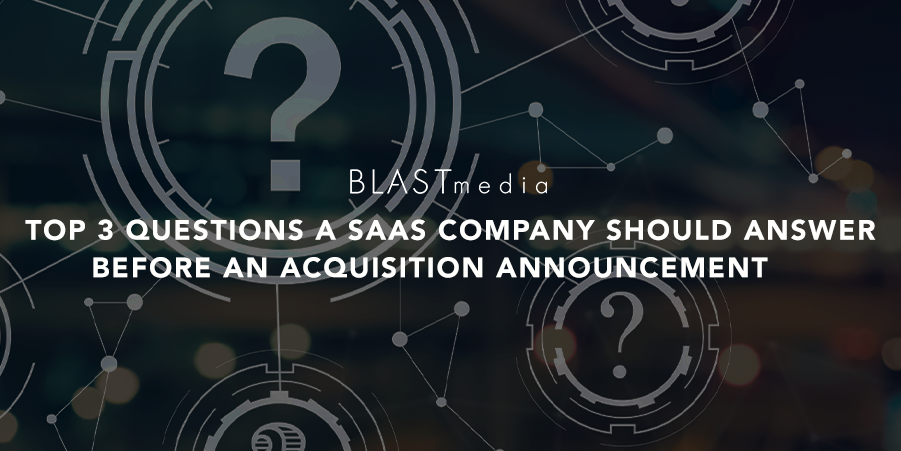Announcing the acquisition of another company is an exciting moment for any SaaS brand. You have an opportunity to share the news with the world and celebrate the milestone for both companies.
A successful announcement requires a well-built-out PR strategy. Your PR firm will have several questions when building out the strategy. Ideally, you’ve told your PR team as early as possible so they have time to ask these questions and get the answers they need.
There are many questions to consider when announcing the acquisition of another company. But we’ve boiled it down to a few of the key types of questions your PR team should be asking.
What are the details of the acquisition?
It all starts with the basics. Who are you acquiring? Where are they located? When will the acquisition be finalized? An important detail to share is whether you will be disclosing the terms of the acquisition. How many employees does the acquired company have? Are they all remaining on board? That’s an important detail to note, especially for local media.
Additionally, you want to know whether the leadership team of the acquired company is staying on and, if so, what their new titles and roles will be. These are some of the key details needed to build out a press release and prepare for potential interviews with media.
What’s the “why” of the acquisition?
You and your PR team will want to figure out the ideal headline for coverage of your acquisition announcement. The best way to determine that is to talk through the “why” with your PR team. What drove the acquisition? Are you expanding into a new market? Adding new product capabilities? Unpacking the “why” should help shape the story your PR team tells through the announcement.
What are the implications of this acquisition announcement?
Announcing the acquisition of another company impacts several stakeholders such as prospective employees, customers and potential investors. It’s important to consider the implications for these audiences as you develop your PR strategy.
What does the acquisition mean for your customers and the customers of the acquired company? Is the acquired company’s brand going to be rolled into yours, or will the two companies continue to act independently? How will this acquisition augment your business? Consider the implications for the market. Does this acquisition change the competitive landscape? Are you planning additional acquisitions? These questions can help your PR team understand the goals for the announcement.
Finalizing the PR Strategy for the Acquisition
As you flesh out the plan with your PR team, other questions will likely come up. You can address several questions by sharing any existing internal communication plans you have.
Another detail to nail down is who will be the spokesperson for both companies. If the acquired company works with a PR agency, it would be good to get your PR team connected with them. An acquisition announcement has a lot of moving pieces, but by asking the right questions and putting a solid PR strategy in place, a successful announcement is possible.
Do you have an acquisition on the horizon? Check out our guide to announcing your acquisition of another company to make sure you’re set up for success.



